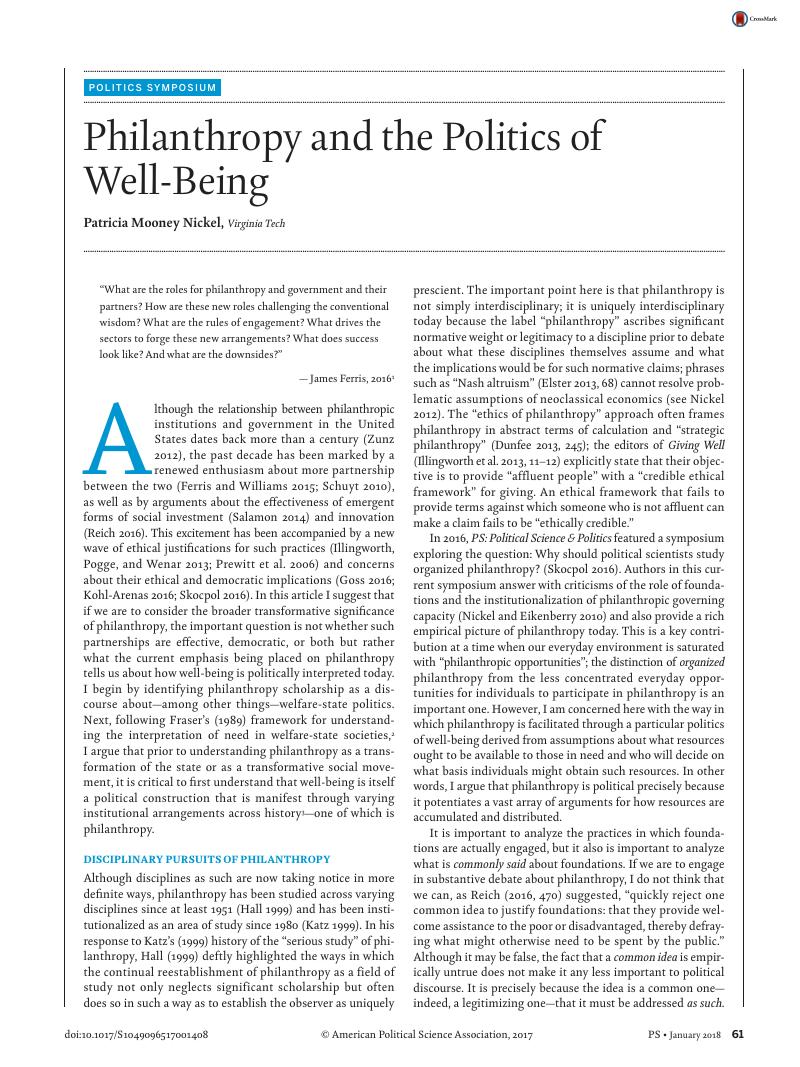Crossref Citations
This article has been cited by the following publications. This list is generated based on data provided by Crossref.
Prescott, Susan
and
Logan, Alan
2018.
Larger Than Life: Injecting Hope into the Planetary Health Paradigm.
Challenges,
Vol. 9,
Issue. 1,
p.
13.
Jensen, Courtney
2019.
The Perfect Pair or Strange Bedfellows? Neoliberal Social Change and Social Justice Philanthropy.
Administrative Theory & Praxis,
Vol. 41,
Issue. 4,
p.
368.
Shaw, Aileen
Canavan, John
and
Dolan, Pat
2021.
Strategic philanthropy's investment in public systems: A framework for intervention.
International Journal of Management Reviews,
Vol. 23,
Issue. 3,
p.
411.
Kraeger, Patsy
and
Phillips, Rhonda
2022.
Introduction to the Special Issue, Philanthropy and Community Well-Being.
International Journal of Community Well-Being,
Vol. 5,
Issue. 2,
p.
205.
Mussell, Linda
Piché, Justin
Walby, Kevin
and
Guenther, Lisa
2022.
‘A prison is no place for a party’: Neoliberalism, charitable fundraising, carceral enjoyments and abolitionist killjoys.
Contemporary Justice Review,
Vol. 25,
Issue. 1,
p.
56.
Tonon, Graciela
Rodríguez de la Vega, Lia
and
Barba, Monseñor Gabriel
2022.
Examining how Individual Philanthropic Actions Influence Community Well-Being.
International Journal of Community Well-Being,
Vol. 5,
Issue. 2,
p.
259.
Salahodjaev, Raufhon
Isaeva, Arletta
and
Abdullayev, Diyorjon
2022.
Is philanthropy related to life satisfaction? Cross-country evidence.
International Sociology,
Vol. 37,
Issue. 3,
p.
271.
Nachman, Jessica R.
Hayhurst, Lyndsay M. C.
and
Wang, Rachel
2023.
Bicycling for mutual aid: centering racialized and 2SLGBTQ+ cyclists in Toronto.
Urban, Planning and Transport Research,
Vol. 11,
Issue. 1,
Weber, Peter C.
2024.
Philanthropic innovations: A historical analysis of Foundations' adoption, implementation, and diffusion of program‐related investment (PRI) strategies.
Nonprofit Management and Leadership,
Vol. 35,
Issue. 1,
p.
61.
Appe, Susan
2024.
Who is a philanthropist? The (ignored) philanthropic impulse of immigrants and migrants in the U.S..
Administrative Theory & Praxis,
Vol. 46,
Issue. 3,
p.
303.



